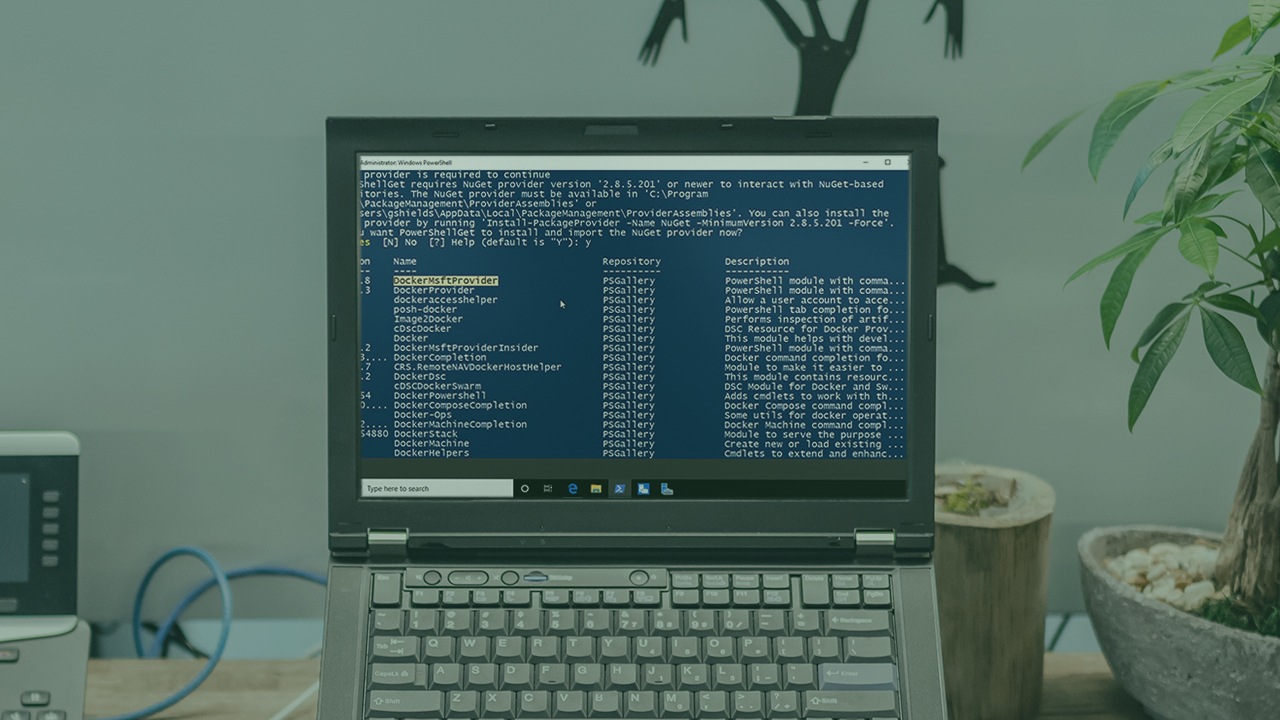

- #Docker desktop for windows server 2019 update
- #Docker desktop for windows server 2019 windows 10
- #Docker desktop for windows server 2019 software
Ingress networking is supported in Swarm Modeĭocker Swarm mode is a very simple but hugely powerful container orchestrator - you join together multiple servers running Docker into a single swarm, and then you manage your workload by deploying stacks to the swarm. You no longer need to expose your Docker API over TCP/IP, which means you don't need to create, apply and cycle TLS certs, and your client inside the container doesn't need to know the details of the host where it's running. This lets you use normal docker and docker-compose commands with no additional configuration, because the Docker CLI inside the container can reach the host API from the named pipe. Sixeyed/jenkins-sample:windowsservercore-1809 v \\.\pipe\docker_engine:\\.\pipe\docker_engine ` The pipe is the default endpoint for the Docker CLI to get to the Docker API running on the same machine, and it also works for containers accessing the Docker API on the machine where they're running: docker container run -d ` Now in Windows Server 2019, you can mount the named pipe for the Docker API as a volume.

Which gets a lot harder when you're running in Swarm mode. It's a bit ugly and it means you need to know the IP address or hostname of the machine where the container is running. '-tlscacert', $env:DOCKER_CA,'-tlscert', $env:DOCKER_CERT, '-tlskey', $env:DOCKER_KEY Īnd in the build job, you set up the configuration for the Docker API in the $dockerConfig variable - complete with certs stored as secret files in Jenkins - before calling the build script: $dockerConfig = '-host', 'tcp://192.168.160.1:2376', '-tlsverify', ` Then you'd parameterise your build commands so you can pass in the Docker API configuration: & docker $dockerConfig image build $buildArg -t $fullTag. In your build steps, you just run the same Docker commands you run on the desktop.īut in Windows Server 2016 you had to access the Docker API over TCP/IP, meaning you had to expose the Docker API and secure it with TLS certificates (probably using Stefan Scherer's instructions). Instead you can run Jenkins in a container, and use docker or docker-compose commands for your build. CI is a great example - if you use multi-stage builds for your apps then you can compile from source inside containers, and you have no need to set up a CI server with a whole bunch of tools.
#Docker desktop for windows server 2019 software
There are lots of scenarios where you want to run software in a container which has access to the Docker API on the host where its running. The Docker API is available through named pipes On Windows Server 2016 you had to get the container's IP address to access it from the host, but now you can use the published port directly from localhost. That's very handy if you develop in a VM, or if you're using Docker in your CI process. PS> iwr -useb -method Head StatusCode : 200 Now in Windows Server 2019, the networking stack in the OS has been updated to support loopback. I wrote about this in Published Ports on Windows Containers Don't Do Loopback
#Docker desktop for windows server 2019 windows 10
But on Windows Server 2016 you can only access the port externally, not using using localhost on the machine.ĭocker Desktop on Windows 10 has had a fix for this for a while, so you can use localhost on the desktop, but the network stuff is happening in Docker Desktop not in the OS layer. Windows containers let you publish ports in the usual way, so when network traffic comes into your machine on a specific port, Docker directs it to the container to handle.

Published ports are accessible on localhost
#Docker desktop for windows server 2019 update
A Windows 10 Update is rolling out right now which adds this kernel to Windows 10, so you can use these images on Windows Server 2019 or Windows 10 if you're on 1809 or higher ( winver will tell you this). Windows Server 2019 uses the OS version 1809.

All the Docker images in the snippets are from my dockerfiles-windows repo on GitHub, and they're all published to my sixeyed org on Docker Hub so you can follow along. It focuses entirely on Windows Server 2019 UPDATE: the second edition of my book Docker on Windows is out now. Windows Server 2019 closes most of that gap, so Windows Docker containers are pretty much on a par with Linux containers. There are thousands of Windows Server 2016 machines running Docker containers in production, but there's always been a small functionality gap between Windows containers and Linux containers.


 0 kommentar(er)
0 kommentar(er)
